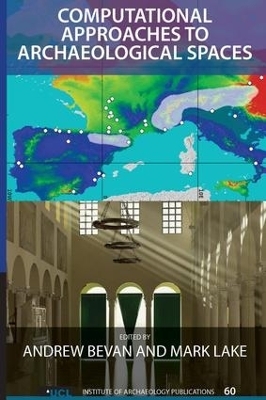
Computational Approaches to Archaeological Spaces
Left Coast Press Inc (Verlag)
978-1-61132-346-7 (ISBN)
Andrew Bevan is a lecturer at the Institute of Archaeology, University College London, UK. He has active research interests in the social construction of value across widely ranging time periods and cultural contexts, with a particular focus on early societies in the Middle East and Mediterranean. He is author of Stone Vessels and Values in the Bronze Age Mediterranean (Cambridge, 2007). Mark Lake is Senior Lecturer at the Institute of Archaeology, University College London, UK and coordinator of the graduate programme in GIS and Spatial Analysis in Archaeology there. A specialist in GIS and computer simulation, he studies patterning in prehistoric field systems and models the origins of culture. He is author of several simulation programs, coeditor of Geographical Information Systems in Archaeology and of Simulating Change, and author of numerous research articles.
List of Illustrations
Acknowledgments
1. Introduction,Andrew Bevan and Mark Lake
2. Intensities, Interactions and Uncertainties: Some New Approaches to Archaeological Distributions, Andrew Bevan, Enrico Crema, Xiuzhen Li and Alessio Palmisano
3. An Examination of Automated Archaeological Feature Recognition in Remotely Sensed Imagery, Kenneth Kvamme
4. An Introduction to Integrative Distance Analysis (IDA), Terence Clarke
5. Network Models and Archaeological Spaces, Ray Rivers, Carl Knappett, and Timothy Evans
6. Multilevel Selection and the Evolution of Food Sharing in Fragmented Environments: A Spatially Explicit Model and its Implications for Early Stone Age Archaeology, L.S. Premo
7. Stories of the Past or Science of the Future? Archaeology and Computational Social Science, Michael Barton
8. The Potential and Limits of Optimal Path Analysis, Irmela Herzog
9. Compute-Intensive GIS Visibility Analysis of the Settings of Prehistoric Stone Circles, Mark Lake and Damon Ortega
10. Reconsidering the Concept of Visualscape: Recent Advances in Three-Dimensional Visibility Analysis, Eleftheria Paliou
11. Formal and Informal Analysis of Rendered Space: The Basilica Portuense, Graeme Earl, Vito Porcelli, Constantinos Papadopoulos, Gareth Beale, Matthew Harrison, Hembo Pagi and Simon Keay
12. Reproducible Data Analysis and the Open Source Paradigm in Archaeology, Benjamin Ducke
Index
About the Editors/Contributors
| Reihe/Serie | UCL Institute of Archaeology Publications |
|---|---|
| Verlagsort | Walnut Creek |
| Sprache | englisch |
| Maße | 152 x 229 mm |
| Gewicht | 790 g |
| Themenwelt | Geisteswissenschaften ► Archäologie |
| ISBN-10 | 1-61132-346-0 / 1611323460 |
| ISBN-13 | 978-1-61132-346-7 / 9781611323467 |
| Zustand | Neuware |
| Informationen gemäß Produktsicherheitsverordnung (GPSR) | |
| Haben Sie eine Frage zum Produkt? |
aus dem Bereich


